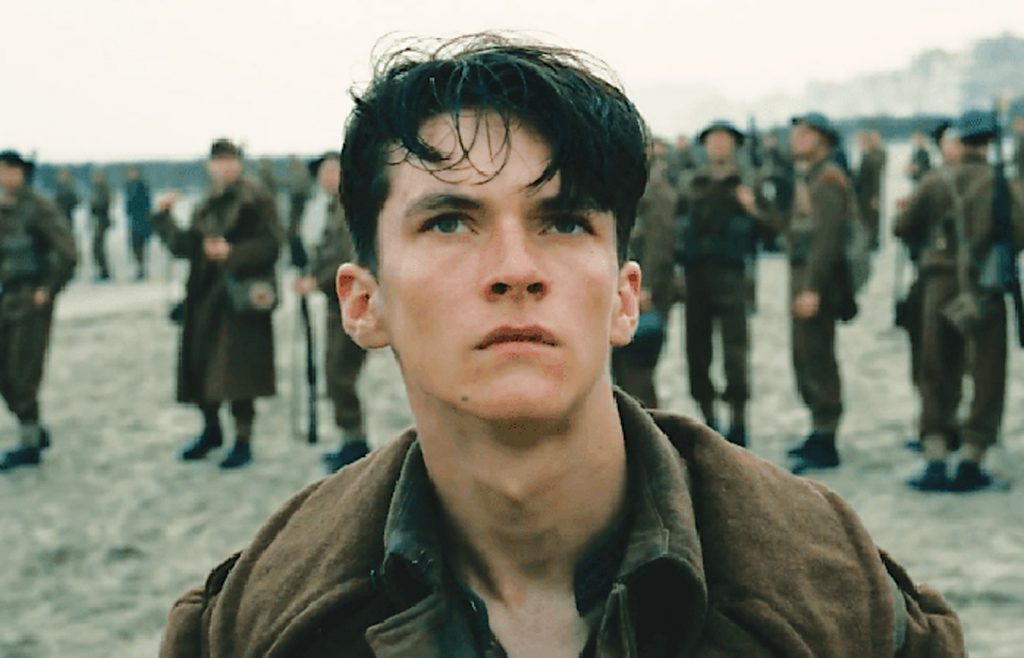
In the Bible, the Hebrews flee Egypt for the Promised Land. But their escape is halted by the Sea of Reeds, until the sea magically recedes, allowing them free passage across the water. The World War II evacuation of Allied soldiers from Dunkirk approaches this same magnitude. In May 1940, the British Admiralty enlisted the help of small civilian boats piloted by volunteers to rescue 400,000 stranded soldiers from the French harbor of Dunkerque. Over 330,000 were evacuated, and Prime Minister Winston Churchill called it the Miracle of Deliverance. Had the rescue failed, Britain would have surrendered to Germany, leaving Western civilization under the rule of an Aryan tyrant.
Dunkirk’s cast of soldiers includes One Direction’s Harry Styles as well as some unfamiliar but satisfying young actors. And it’s brimming with power players like Kenneth Branagh as a British commander, Tom Hardy piloting a fighter plane (but concealed by a flight mask), and Mark Rylance as a civilian navigating his own wooden yacht across the English Channel to Dunkirk. And playing Winston Churchill, who guided Britain to victory—oh, wait, his character isn’t in the cast.
There are countless ways to tell a story, especially about war. With Dunkirk’s lean, 76-page screenplay that’s light on dialogue and long on visuals, writer-director Christopher Nolan credits his viewers with being versed in history, though some of us always welcome a refresher and a compass. But Nolan’s mission imagines the experience of war on the big screen, staging a trifecta on land, air, and sea. Astounding cinematography shot in Europe gives witness to the desperation of Allied soldiers waiting on the shores for an escape plan, while overhead, RAF sky pilots exchange fire with the Luftwaffe. And the Germans sink the HMS Wakeful, claiming 700 lives. Nolan alternates several narratives, cutting back and forth continuously, without favor, creating an anonymous presentation style where the viewer can choose who they care about, if anyone . . . a do-it-yourself point of view.
The test of a story’s impact is the way it makes you feel. Dunkirk dazzles as a visual masterpiece for the armchair observer of war. But the epic success of Operation Dynamo feels more cerebral than emotional. I felt the tension but not the triumph. Something was missing. Churchill ordered the evacuation, civilians made it happen, and the plan succeeded beyond all expectations, changing the course of history. What’s missing is the personal connection. I needed to celebrate all of those heroes who saved the world for me. B
